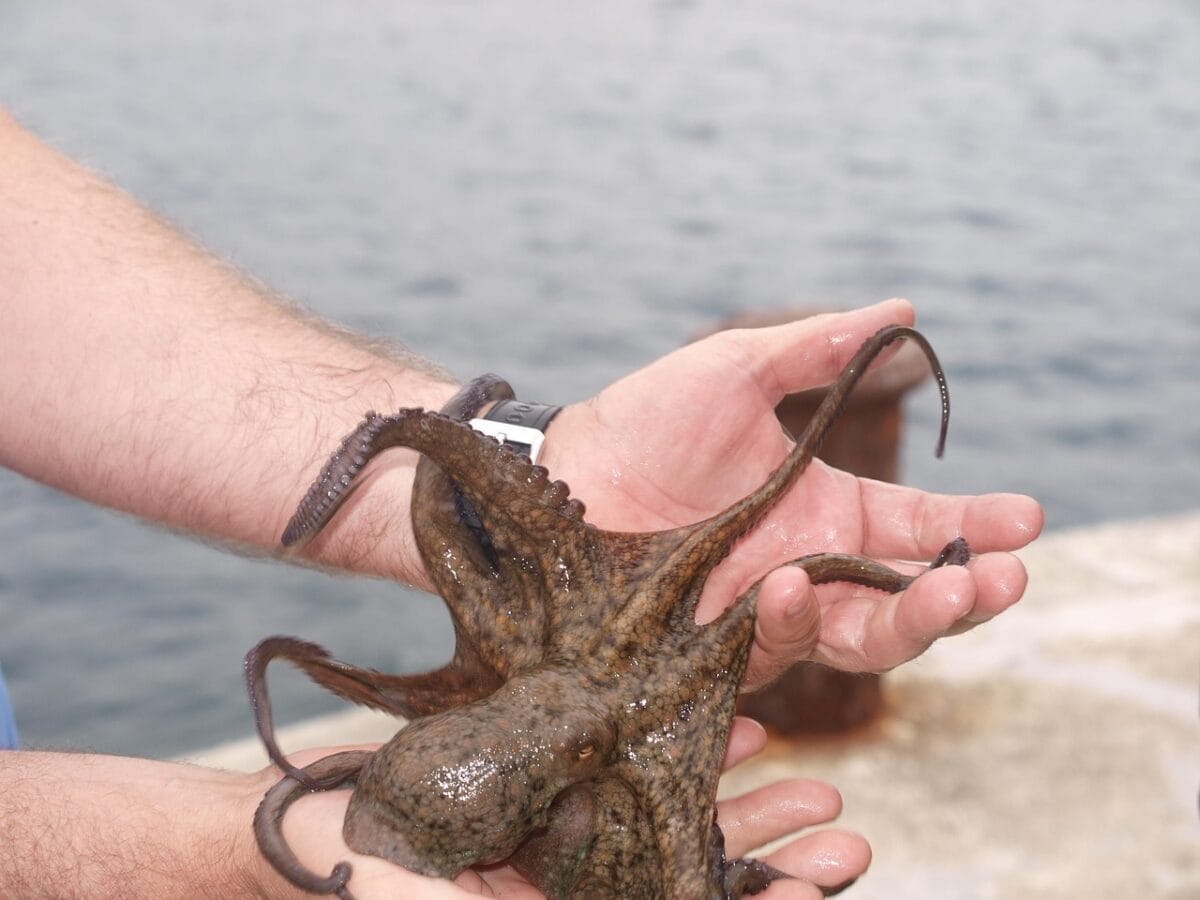The octopus stands as one of the most fascinating creatures in our oceans, captivating scientists and nature enthusiasts alike with its remarkable intelligence and problem-solving abilities. What makes these cephalopods truly extraordinary, however, goes far beyond their shape-shifting capabilities and ink-squirting defense mechanisms. Unlike virtually any other complex animal on Earth, the octopus possesses a decentralized nervous system where approximately two-thirds of its neurons reside not in its central brain but distributed throughout its eight arms. This revolutionary biological design allows each arm to operate with a degree of autonomy while still functioning as part of a cohesive whole, creating what some researchers have described as a “distributed intelligence” that challenges our fundamental understanding of cognition and consciousness. This unique neural architecture enables octopuses to process sensory information, make decisions, and even solve problems locally within their limbs, making them one of the most neurologically sophisticated invertebrates on the planet.
The Anatomy of an Octopus Brain
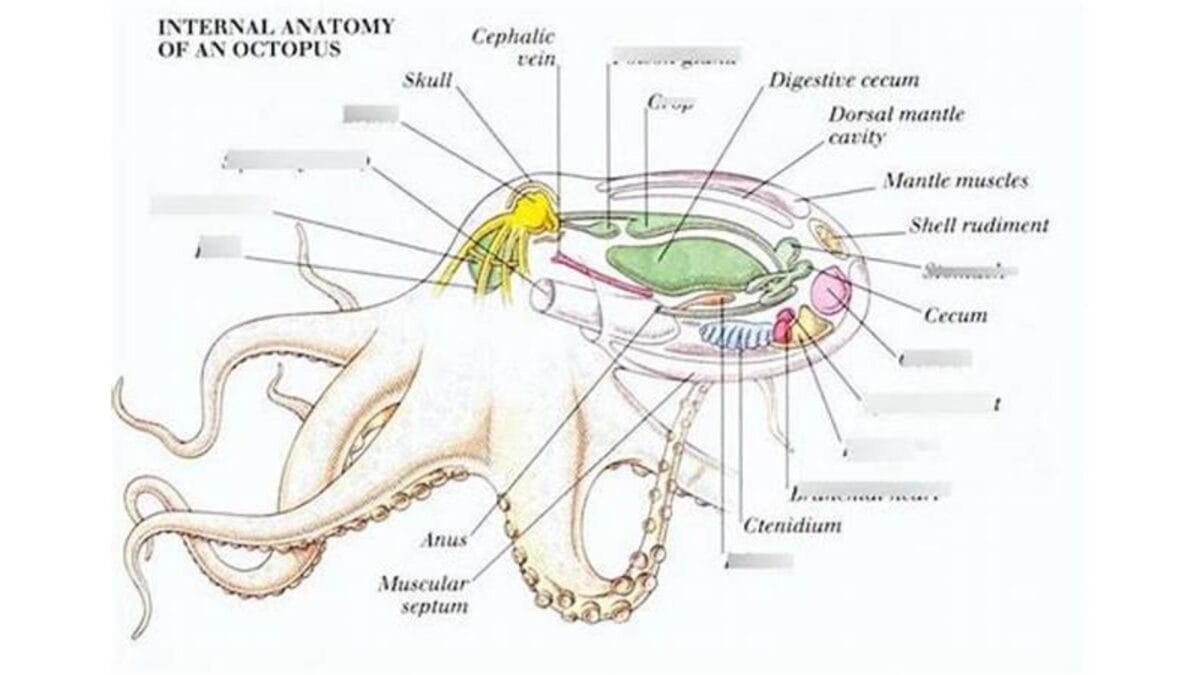
An octopus’s central brain consists of approximately 170 million neurons arranged in a donut-shaped structure that wraps around its esophagus. This central brain is divided into distinct lobes that handle specific functions, including memory, learning, and vision processing. However, what makes octopus neurology truly remarkable is that this central brain accounts for only about one-third of the animal’s total neurons. The majority—approximately 350 million neurons—are distributed throughout the eight arms, creating a neural network unlike anything found in vertebrates. This anatomical arrangement allows the octopus to delegate certain neural responsibilities to its limbs, effectively offloading computational tasks from the central brain and creating a distributed processing system. Each arm contains a nerve cord running down its length, functioning somewhat like a spinal cord, which allows it to process sensory information and coordinate movement independently of the central brain.
Arm Autonomy: A Mind of Their Own
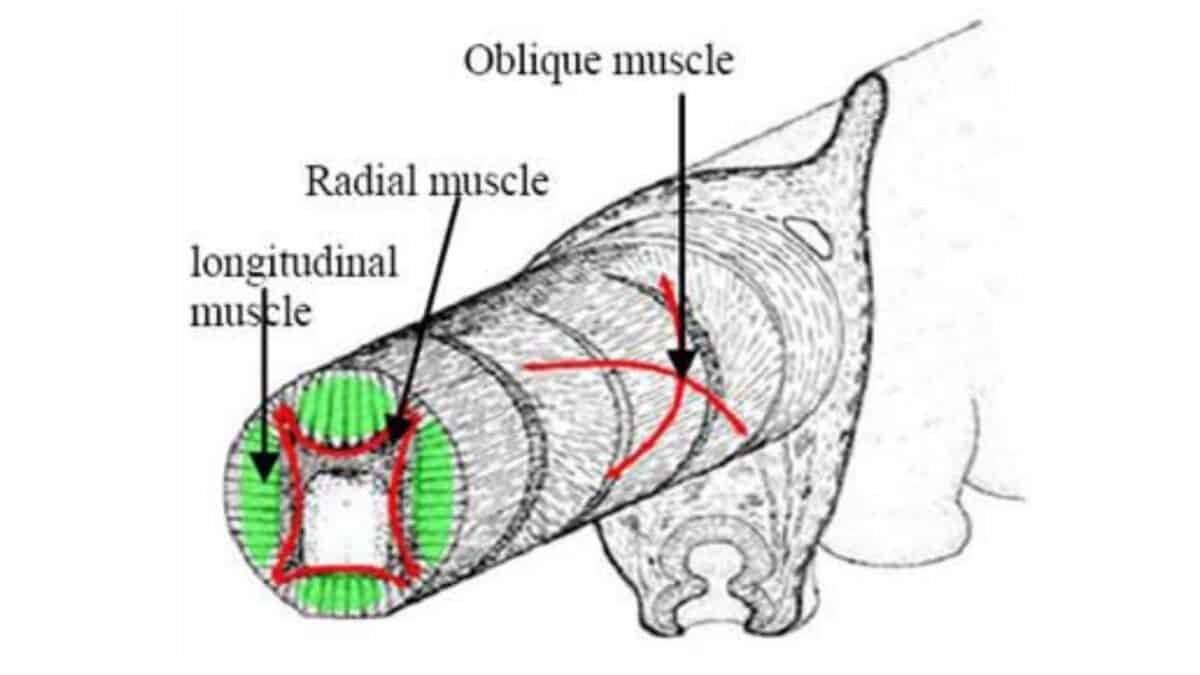
The neural independence of octopus arms is so pronounced that researchers have observed severed arms continuing to respond to stimuli for short periods. Each arm possesses its own ganglia—clusters of nerve cells that function as local processing centers—allowing the limb to react to its environment even when disconnected from central control. This remarkable autonomy serves a practical purpose: it enables the octopus to execute complex movements without overwhelming its central brain with computational demands. For instance, when an octopus reaches into a crevice to search for prey, the arm can navigate independently, adjusting to the shape of the space and responding to touch sensations without requiring constant commands from the central brain. This division of labor is more than mere delegation—it represents a fundamentally different approach to neural organization compared to the centralized command structure found in mammals and other vertebrates.
The Neural Network Within Each Tentacle
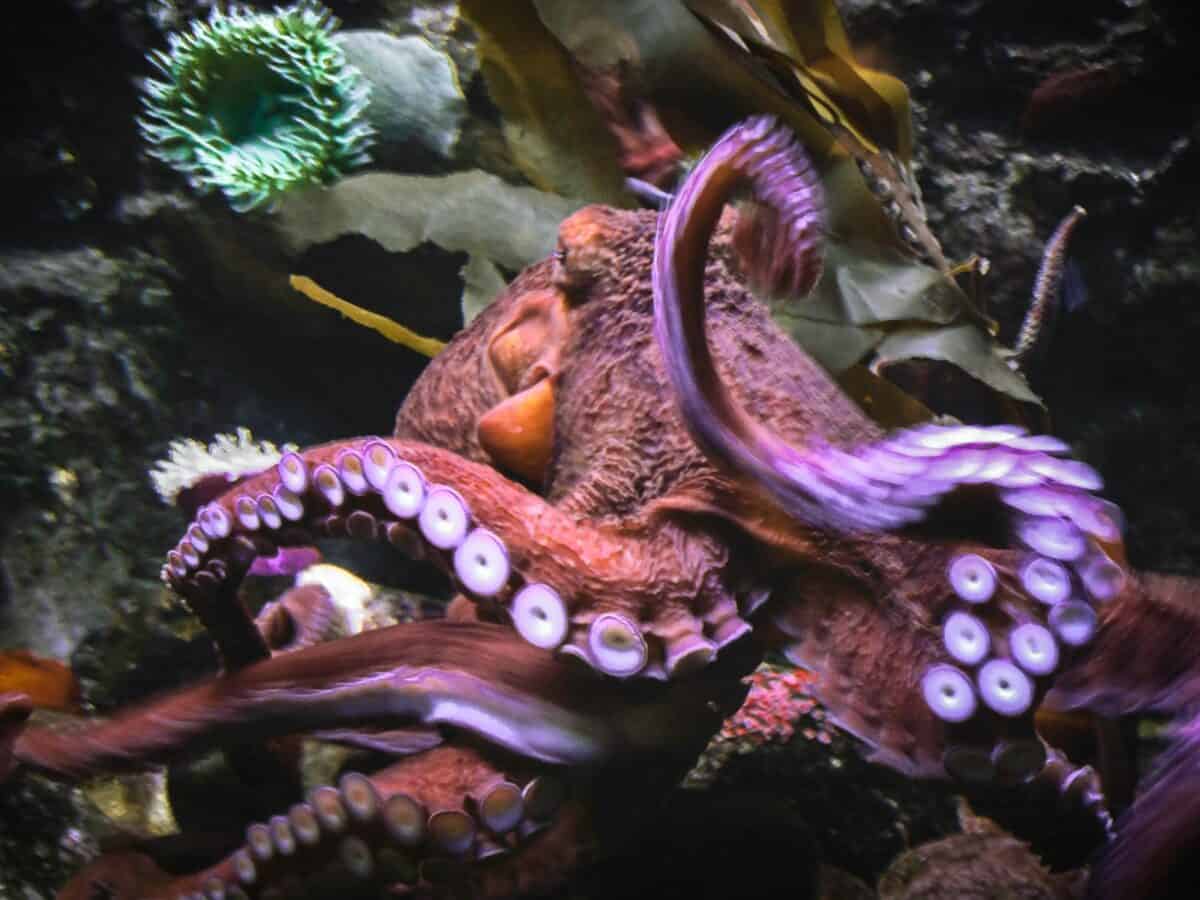
Each octopus arm contains a complex neural network organized around a central axial nerve cord. This cord connects to thousands of suckers, each of which functions as both a sensory organ and a manipulation tool. Every sucker contains approximately 10,000 neurons dedicated to processing tactile and chemical information, making them extraordinarily sensitive detection instruments. The density of sensory receptors in octopus suckers exceeds that found in human fingertips by orders of magnitude, allowing them to distinguish minute textural differences and even detect certain chemicals at concentrations as low as a few parts per billion. The neural architecture within each arm is arranged hierarchically, with local reflex circuits handling immediate responses while more complex information travels up to higher processing centers. This organization allows the arms to perform sophisticated tasks like texture discrimination and object manipulation without requiring direct oversight from the central brain.
Chemical Communication Between Arms and Brain
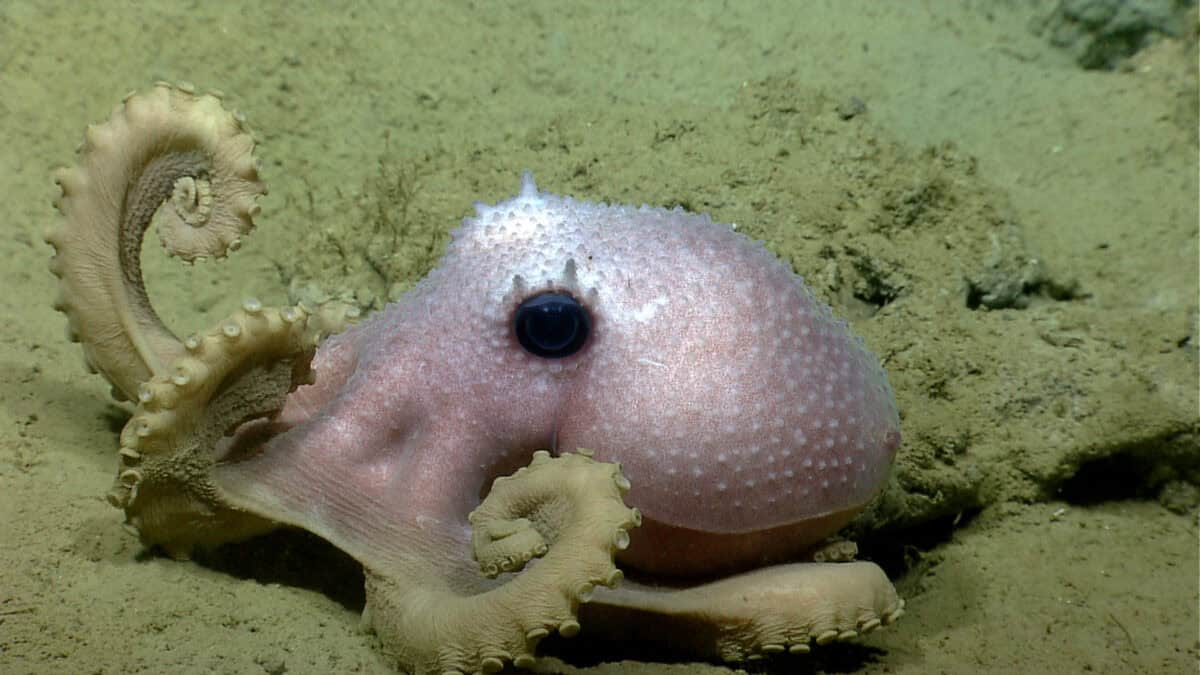
The octopus’s distributed nervous system relies on both electrical and chemical signaling to coordinate activity between the central brain and the arms. Researchers have identified specialized neurotransmitters that appear unique to cephalopods, suggesting the evolution of novel signaling mechanisms to support this unusual neural architecture. Of particular interest is the octopus’s use of acetylcholine, a neurotransmitter that plays a crucial role in facilitating communication between the central brain and the peripheral nervous system in the arms. Studies have shown that different concentrations of acetylcholine can modulate the degree of autonomy exhibited by the arms, effectively allowing the central brain to dial the level of independent action up or down as needed. This chemical control system represents a sophisticated regulatory mechanism that helps balance local autonomy with centralized coordination, enabling the octopus to adapt its neural functioning to different behavioral contexts.
Problem-Solving at the Edge: Cognition in the Extremities

The distributed intelligence of octopuses enables problem-solving capabilities that can occur locally within the arms themselves. When an octopus encounters a novel object, each arm can independently explore and gather information about its properties, creating multiple simultaneous streams of sensory input. This parallel processing allows octopuses to rapidly assess complex environmental features without overburdening the central brain. In laboratory settings, researchers have observed octopuses solving mechanical puzzles where different arms appear to pursue different strategies simultaneously, suggesting a form of distributed problem-solving. This cognitive approach differs fundamentally from the sequential, centralized problem-solving methods employed by most vertebrates. The evolutionary advantage is clear: by distributing cognitive tasks across its body, the octopus can interact with multiple aspects of its environment simultaneously, enabling more efficient foraging, exploration, and threat assessment.
The Evolutionary Advantage of a Distributed Brain
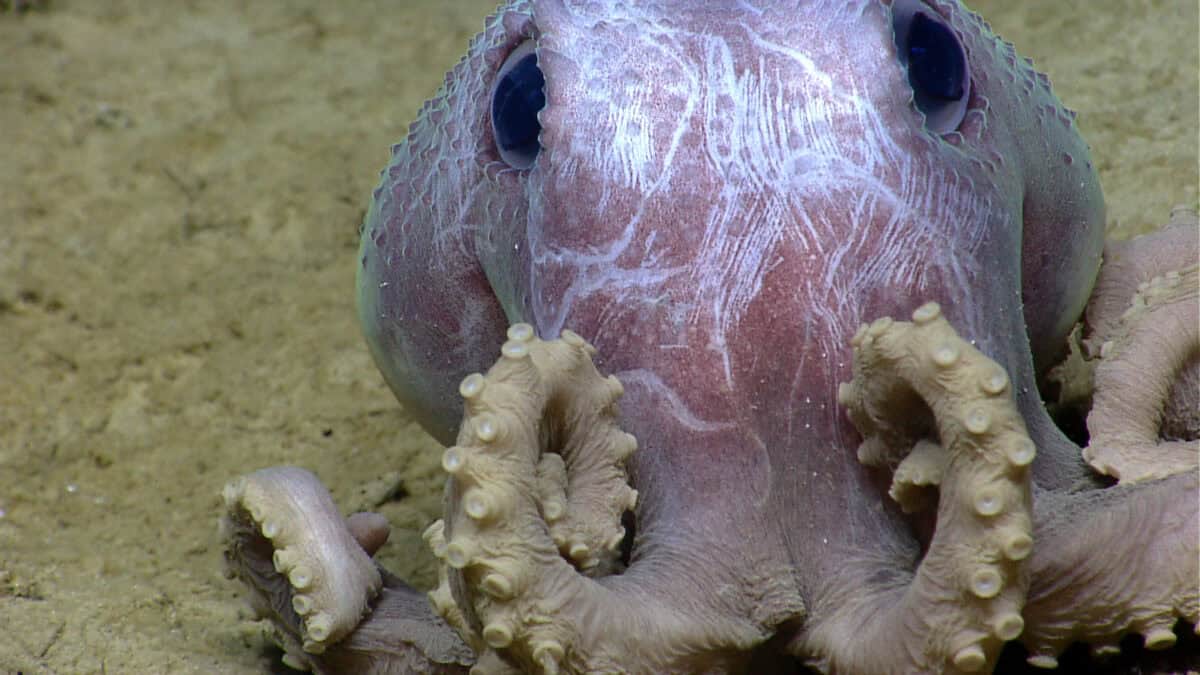
The evolution of a distributed nervous system in octopuses likely represents an adaptation to their unique ecological niche and physical structure. Without the constraints of a rigid skeleton, octopuses needed a neural system that could coordinate the movements of a highly flexible body with virtually infinite degrees of freedom. A centralized brain controlling every aspect of eight highly articulated arms would require enormous computational resources and would likely create information bottlenecks. By evolving a distributed system, octopuses gained the ability to delegate routine sensorimotor tasks to local neural circuits while reserving the central brain for higher-order functions like learning, memory, and decision-making. This arrangement offers particular advantages for an animal that needs to simultaneously control eight appendages, each capable of complex, independent movement. The distributed brain also provides redundancy—damage to one arm or part of the nervous system doesn’t catastrophically impair the animal’s overall functioning, conferring an evolutionary advantage in predator-rich environments.
Skin as a Sensory and Communication Organ

Beyond the neural networks in its arms, the octopus’s distributed intelligence extends to its remarkable skin, which functions as both a sensory organ and a display system. The skin contains specialized cells called chromatophores that can expand and contract to change color and pattern, allowing for sophisticated camouflage and communication. These chromatophores are controlled by direct neural connections from both the central brain and the local neural networks in the arms. Remarkably, the octopus skin also contains light-sensitive proteins similar to those found in eyes, suggesting the skin itself may have limited “vision” capabilities. This distributed sensory system allows the octopus to respond to environmental stimuli without necessarily processing the information through its central brain. For example, studies have shown that octopus skin can change color to match the surroundings even when the animal is asleep or when the optic nerves are severed, indicating local neural control of these complex responses.
Coordination Challenges: How the Central Brain Maintains Control

Despite the considerable autonomy granted to the arms, the octopus must still coordinate their activities to achieve coherent behaviors like locomotion, hunting, and object manipulation. This coordination presents a fascinating control problem: how does the central brain maintain overall command while allowing for local independence? Research suggests that the octopus employs a hierarchical control system where the central brain issues high-level commands—such as “move in this direction” or “grasp that object”—while leaving the details of execution to the distributed neural networks in the arms. Studies using electrical recording techniques have revealed that the octopus central brain appears to simplify the control problem by creating “motor primitives”—basic movement templates that can be combined to generate complex behaviors. This approach allows the central brain to maintain strategic control without becoming bogged down in micromanaging the precise movements of each sucker on each arm, striking an elegant balance between centralized direction and distributed execution.
The Role of Memory and Learning in a Distributed System

How memory and learning function in a distributed nervous system presents intriguing questions for neuroscientists. Evidence suggests that while the central brain of the octopus handles complex associative learning and memory storage, the arms possess their own capacity for simple forms of learning and memory. Experiments have demonstrated that octopus arms can be conditioned to respond differently to specific stimuli even when isolated from the central brain, indicating a form of local memory. However, more complex memories and learned behaviors appear to require the involvement of the central brain, particularly structures analogous to the hippocampus in vertebrates. This creates a tiered memory system where routine sensorimotor memories can be stored locally in the arms, while more complex associations and episodic memories reside in the central brain. This arrangement allows the octopus to optimize its neural resources, storing information where it will be most efficiently accessed and utilized.
Implications for Artificial Intelligence and Robotics

The distributed intelligence of octopuses has captured the attention of researchers in artificial intelligence and robotics who see valuable design principles in this natural model. Traditional AI systems typically employ centralized processing architectures, but these can create bottlenecks when scaling to complex, multi-limbed robotic systems. Engineers are now developing “octopus-inspired” robotics that incorporate distributed processing nodes throughout a robot’s structure, mimicking the local intelligence found in octopus arms. This approach—sometimes called “embodied intelligence” or “morphological computation”—offloads certain computational tasks to local processors in the limbs themselves, reducing the burden on the central system. Several research laboratories are currently developing soft robotics inspired by octopus biomechanics, incorporating distributed control systems that allow for more adaptive and resilient operation. These innovations could lead to more effective robots for applications ranging from disaster response to minimally invasive surgery, where adaptability and resilience to damage are crucial design considerations.
Consciousness and Self-Awareness: Philosophical Questions

The distributed intelligence of octopuses raises profound philosophical questions about the nature of consciousness and self-awareness. If significant neural processing occurs outside the central brain, how does this affect our understanding of what constitutes the “self” in an octopus? Some philosophers and neuroscientists have proposed that octopuses may experience a form of “multiple consciousness” or “distributed awareness” where different parts of the body generate semi-independent streams of experience that are somehow integrated into a coherent whole. This speculation is supported by behavioral observations showing that octopus arms sometimes appear to act with different “intentions” simultaneously, such as when one arm explores a novel object while others continue with a different task. While definitive conclusions about octopus consciousness remain elusive, their neural architecture challenges our vertebrate-centric assumptions about the necessary conditions for complex awareness. The octopus may represent an alternative evolutionary pathway to intelligence—one that developed sophisticated cognitive capabilities through distributed rather than centralized neural processing.
Recent Research Breakthroughs

Advances in neuroscience techniques have recently allowed researchers to gain unprecedented insights into the functioning of the octopus’s distributed nervous system. Using a combination of electrophysiological recording, calcium imaging, and genetic techniques, scientists have begun mapping the neural circuits that allow communication between the central brain and the arms. A 2019 study published in Current Biology identified specific neuronal pathways that enable the central brain to override the autonomous functioning of the arms when coordinated action is required. Another groundbreaking study from 2021 used advanced imaging to track neural activity throughout the octopus body during various behaviors, revealing complex patterns of coordination between local and central processing. Researchers have also made progress in understanding the genetic basis of this unique neural architecture, identifying genes involved in arm development that appear to have been repurposed during evolution to support local neural processing. These discoveries are gradually revealing the mechanisms behind one of nature’s most unique nervous systems and could ultimately lead to new paradigms in our understanding of brain function across species.
The distributed brain of the octopus challenges our fundamental understanding of how complex nervous systems can be organized and how intelligence might emerge from such alternative architectures. By evolving a system where two-thirds of neurons reside in the arms rather than the central brain, octopuses have developed a form of intelligence that differs radically from the centralized model seen in vertebrates, yet achieves comparable cognitive sophistication through entirely different means. This evolutionary marvel not only sheds light on the diverse pathways through which intelligence can evolve but also offers valuable insights for fields ranging from neuroscience and artificial intelligence to philosophy of mind. As we continue to unravel the mysteries of the octopus’s neural architecture, we may need to expand our definitions of intelligence, consciousness, and even what constitutes a brain. Perhaps the most profound lesson from the octopus’s distributed nervous system is that intelligence need not follow a single evolutionary template—nature has found multiple solutions to the challenge of creating complex minds, reminding us that our own neural organization represents just one possibility among many.
- The Coldest Town in America—And How People Survive There - August 9, 2025
- How Some Birds “Steal” Parenting Duties From Others - August 9, 2025
- 12 Deep-Sea Creatures You Won’t Believe Exist - August 9, 2025

